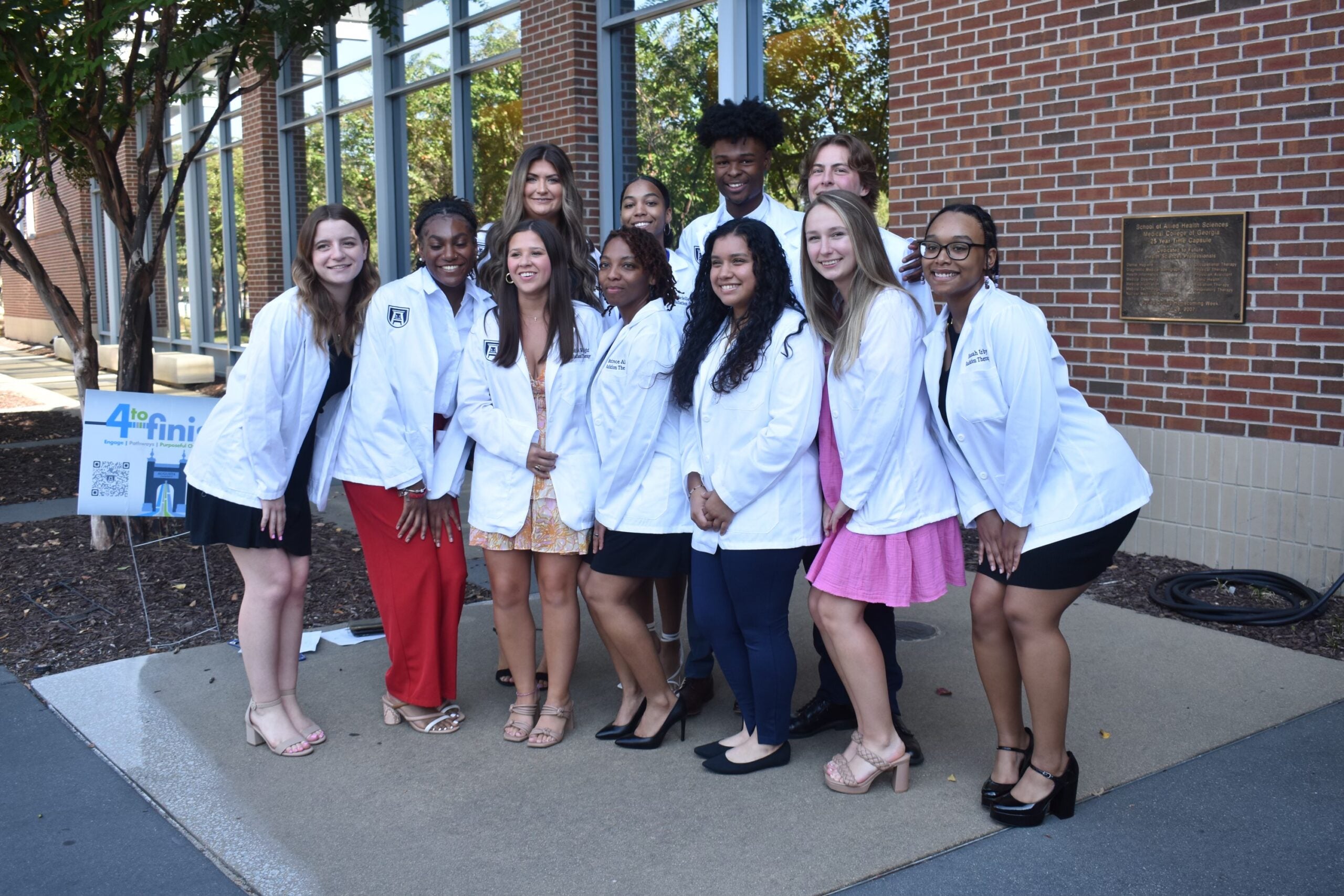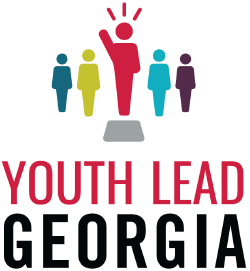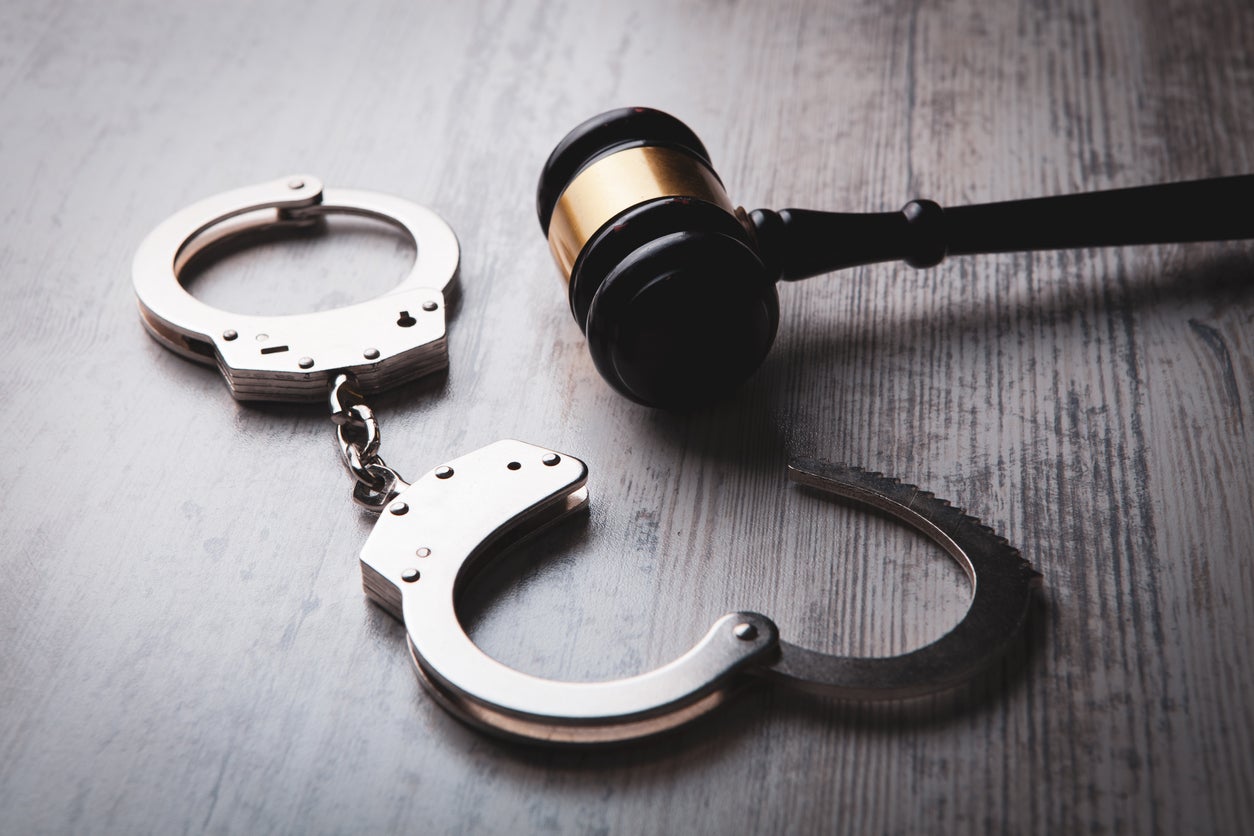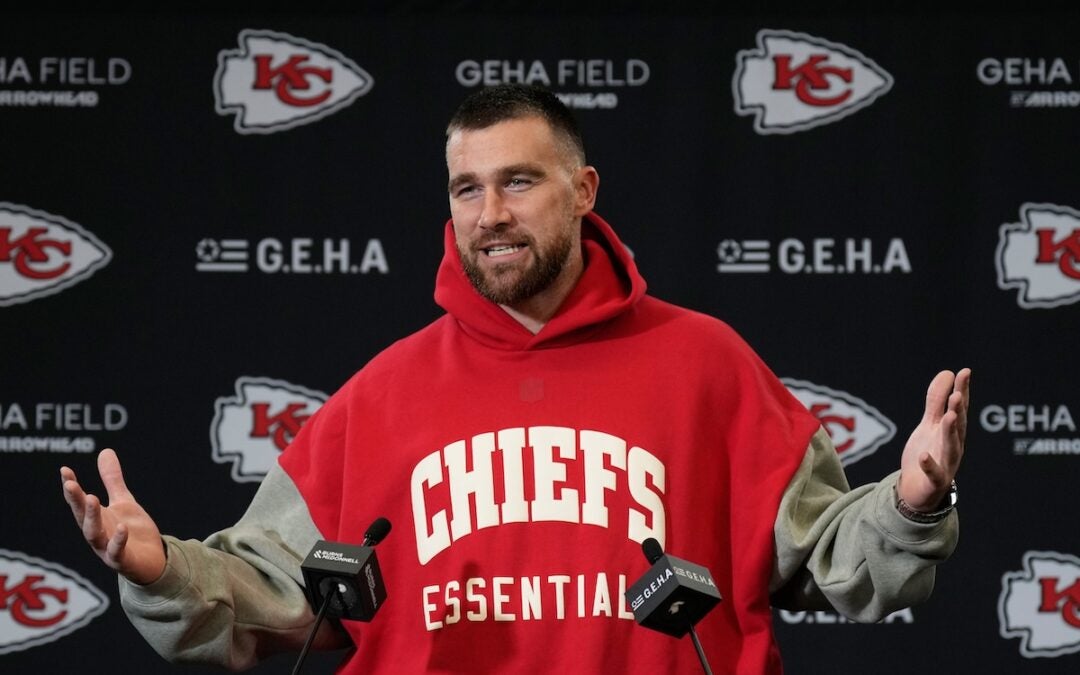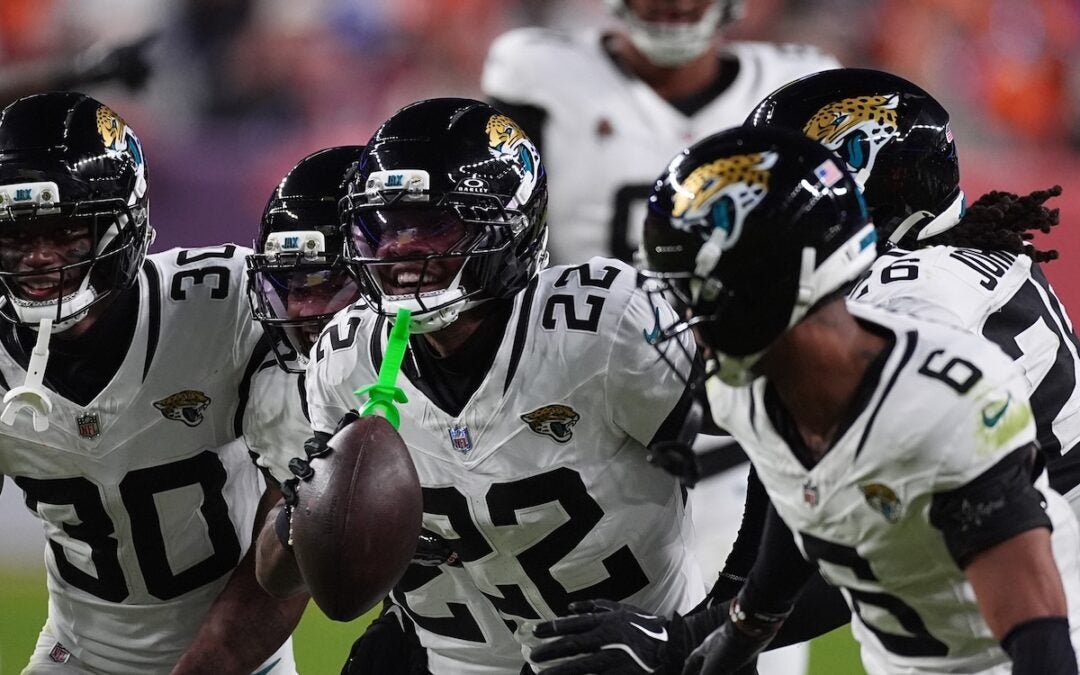Congratulating juniors on their academic perseverance and dedication, Augusta University held a 16th annual White Coat Ceremony Saturday morning, Oct. 7.
Students were celebrated on their entry to various prestigious Augusta University health profession programs, such as Clinical Laboratory Sciences, Nuclear Medicine Technology and Radiation Therapy.
Prior to the presentations of students’ official white coats, which they will wear throughout their time at AU, a handful of faculty and staff spoke on the meaning behind the coat and being a part of the Allied Health college.
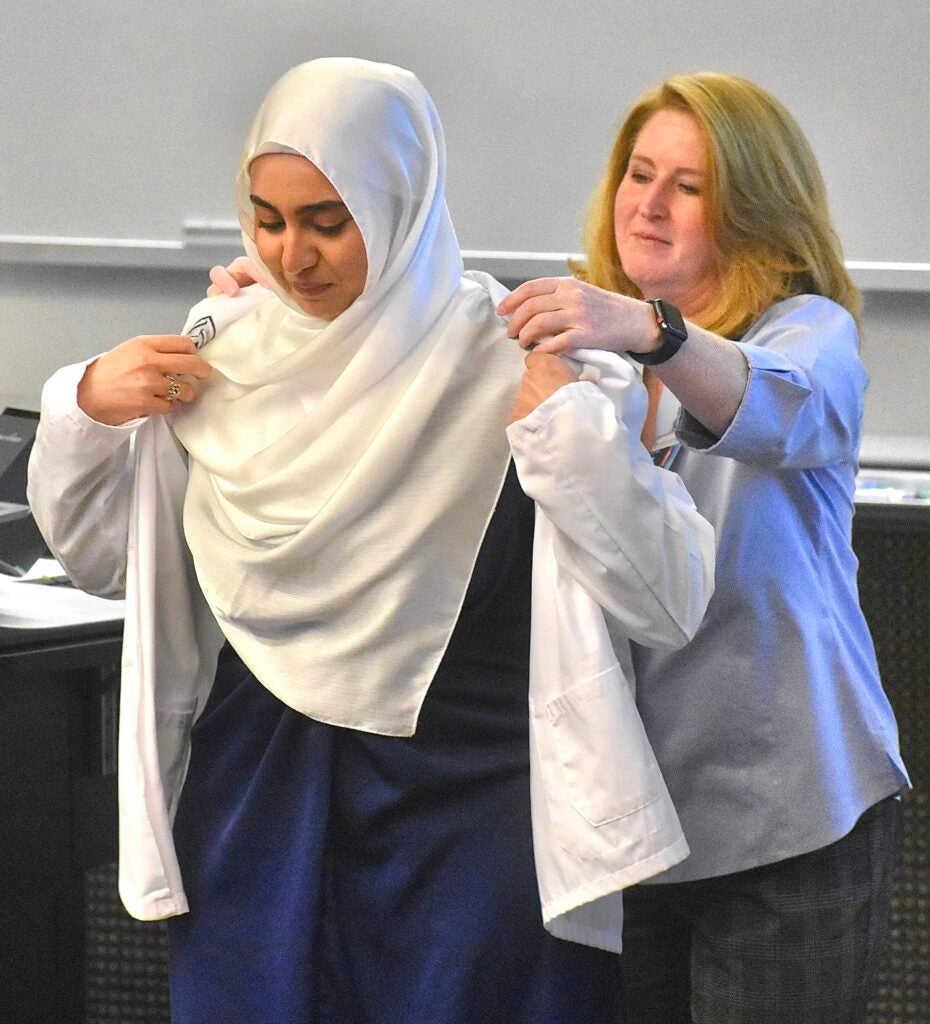
“I really want to welcome you to what is my home,” said Dr. Lester Pretlow, Dean of the College of Allied Health Sciences. “This coat is a symbol for welcoming you into a healing profession.”
Along with Pretlow, another handful of faculty and staff spoke encouraging words of wisdom to students as the event continued.
“Make sure people remember your name. It starts right now. Make sure you have a name that people will love to hear – a name people will love to work with,” said Pretlow.
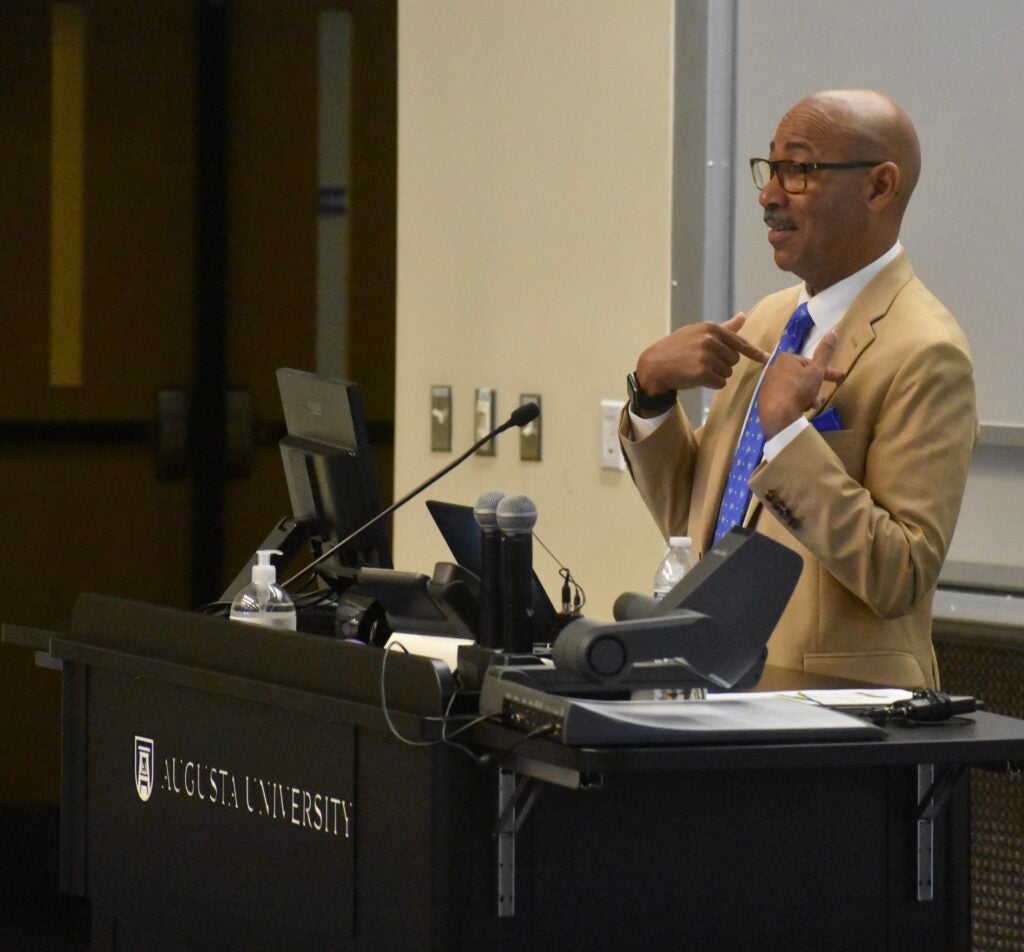
Celebrating its 55th anniversary, the College of Allied Health Sciences is said to offer high graduation ratios and exceptional credential exam rates, according to Pretlow.
“We have been doing this for a very long time, so parents I want you to know that your students are in very good hands with my faculty and staff,” said Pretlow. “We know how to take students from a novice to being a professional.”
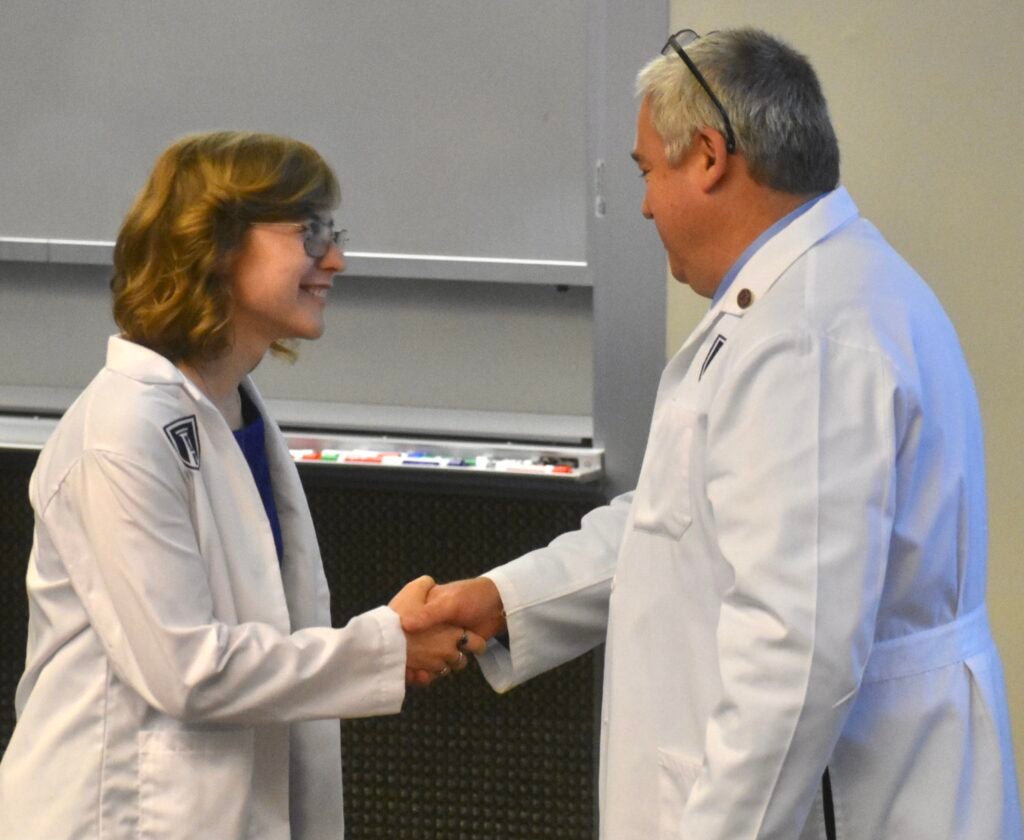
As students navigate the next few semesters of rigorous courses, volunteering shifts, research and internships, university educators said they hoped the meaning behind the white coat would further inspire the undergraduates to continue pushing their academic limits and succeeding.
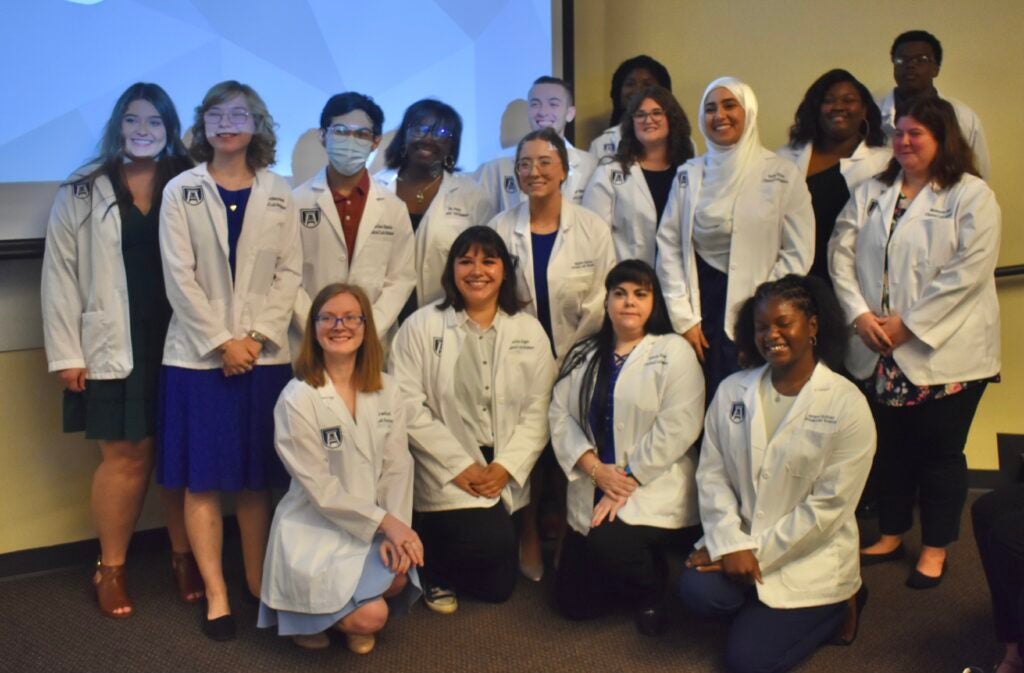
“Many patients view the white coat as a cloak of compassion, service to folks and a symbol of hope,” said Dr. Gregory Passmore, chairman of the Department of Undergraduate Health Professions. “The education and experiences you will receive at Augusta University will prepare you to work in advanced clinical settings throughout Georgia, the United States and the world.”
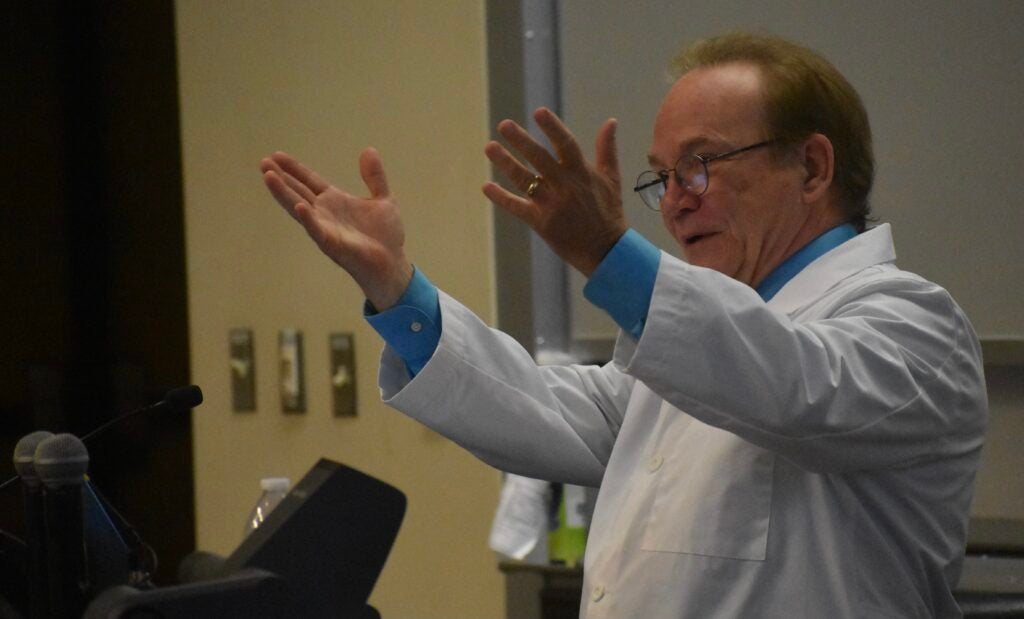
For many students, entry to their specific program was a great feat, but it also only marked the beginning of a challenging new adventure.
“These are not like other college programs,” Pretlow said. “We are showing you what the end looks like, so I’m asking you to embrace that and know where you are going – looking towards the end of your journey, because the end of your journey here is the beginning of somewhere else.”
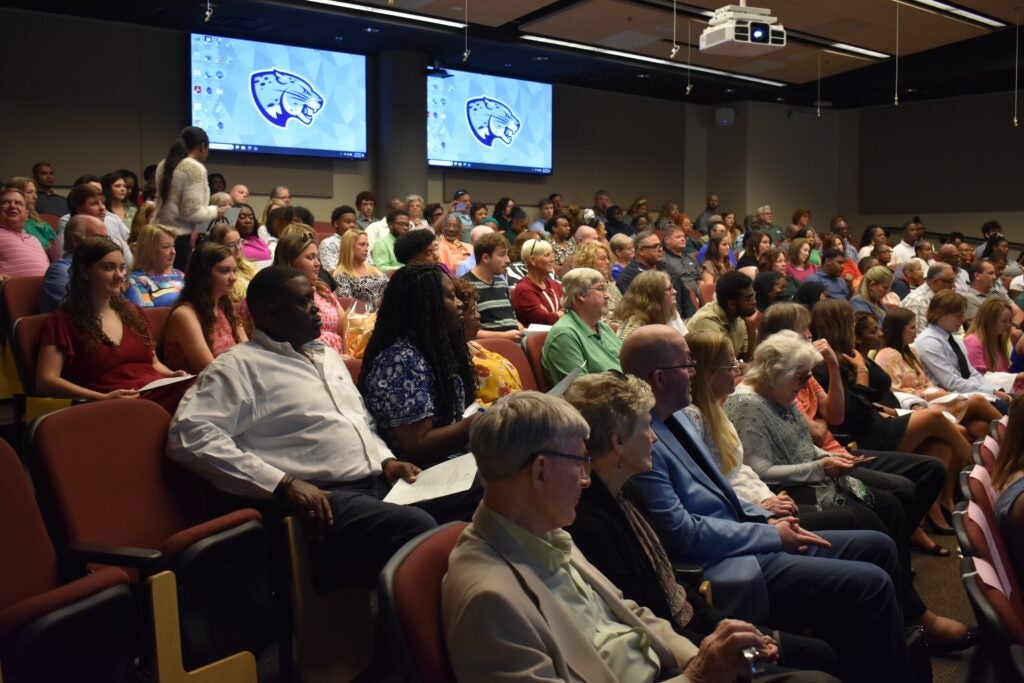
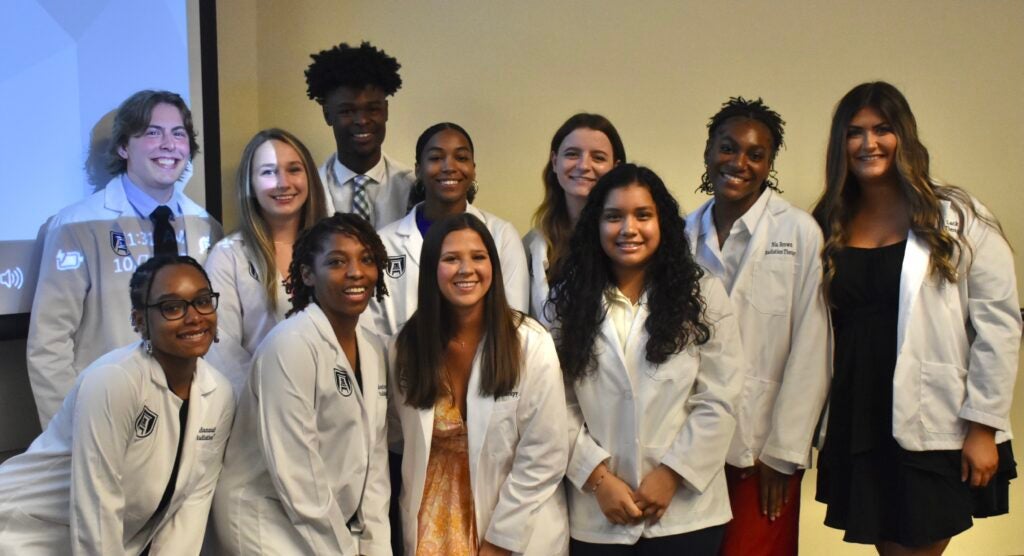
To Clinical Laboratory Sciences student JaHahn Sullivan, the White Coat Ceremony allowed her to truly process her new beginnings in the midst of her incredibly busy schedule.
“It feels a little unreal. I didn’t expect to come this far being in college, so it feels good to have made it into this program with other like minded students,” she said. “It has made me feel like all the work that I’ve put in since I’ve been in college has paid off.”
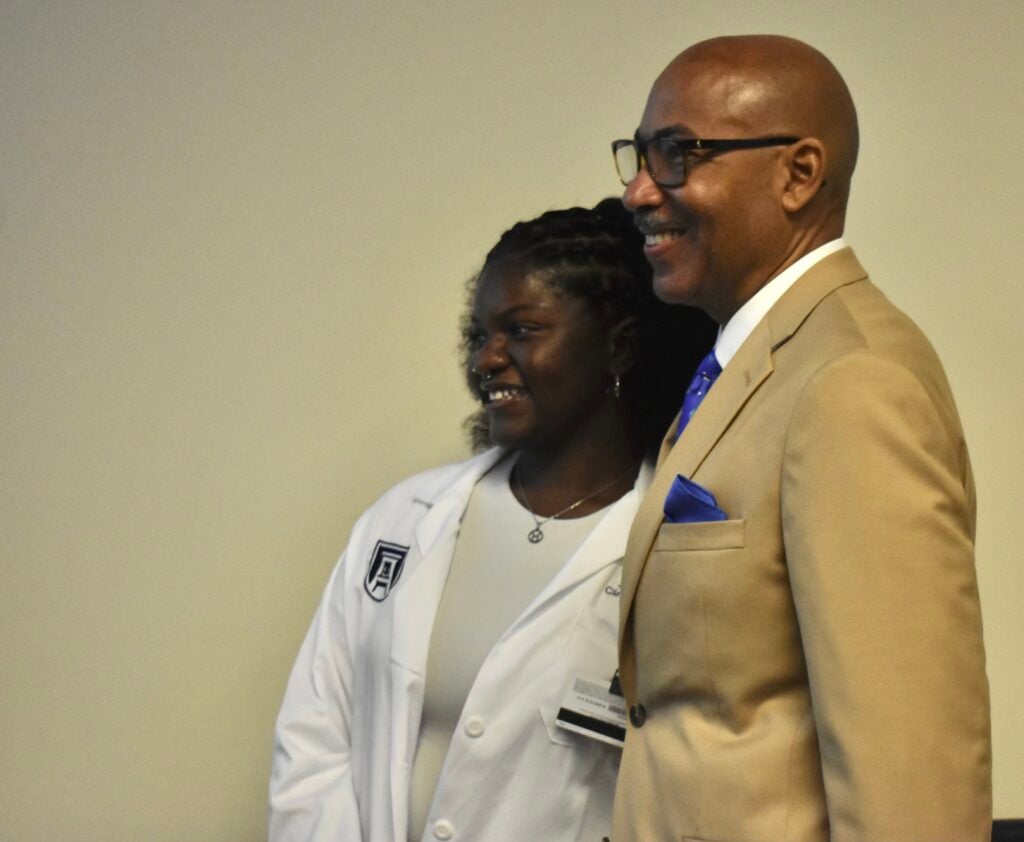
During her next two years in the program, Sullivan said she is most looking forward to learning more about laboratory research and sciences while understanding its importance in the health services profession.
As a breast cancer survivor and mother of a recently accepted radiation therapy program student, Adrienne Brown said she was incredibly proud to share in her daughter’s successes thus far within university and be a witness to both sides of the healthcare coin.
“It’s been beautiful to see from this side,” she said. “I think my daughter is going to do great things, and I love this program. I think it’s been great for her and she’s made so many connections with everybody. It’s a blessing.”
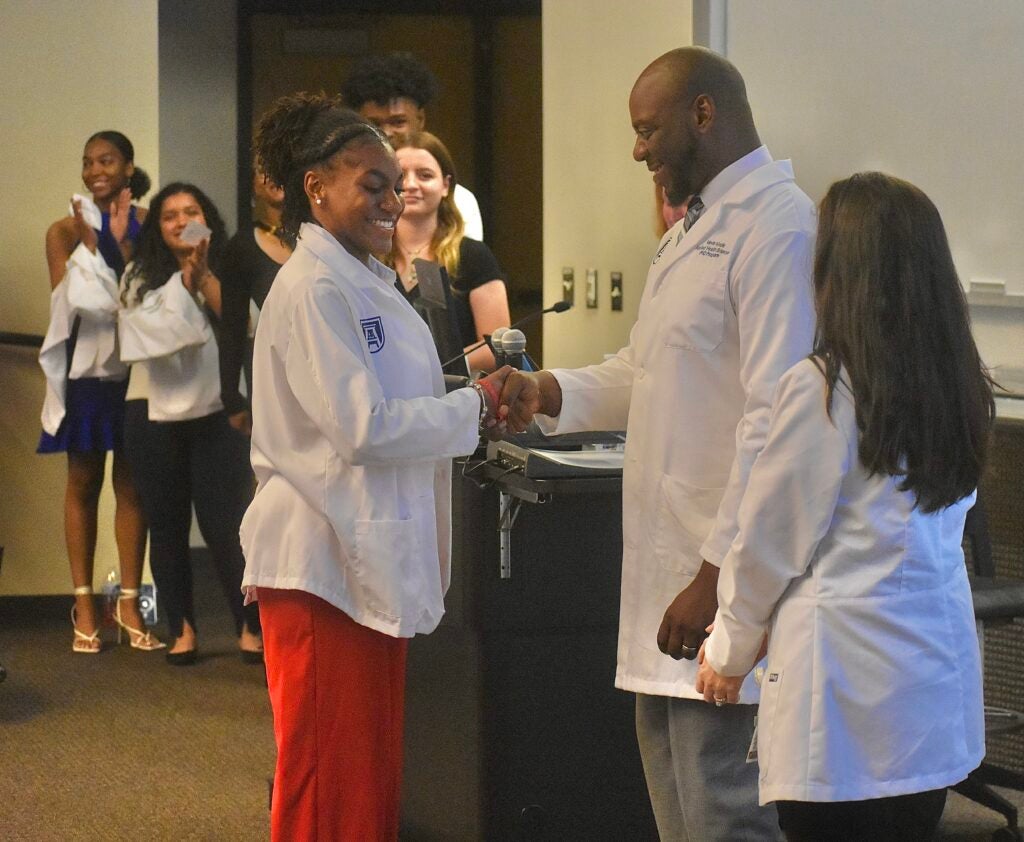
With an auditorium packed full of friends, family and other loved ones, many viewing the ceremony in the stands shed tears, snapped photos and cheered for their students as each donned their white coat and shook hands with their program director.
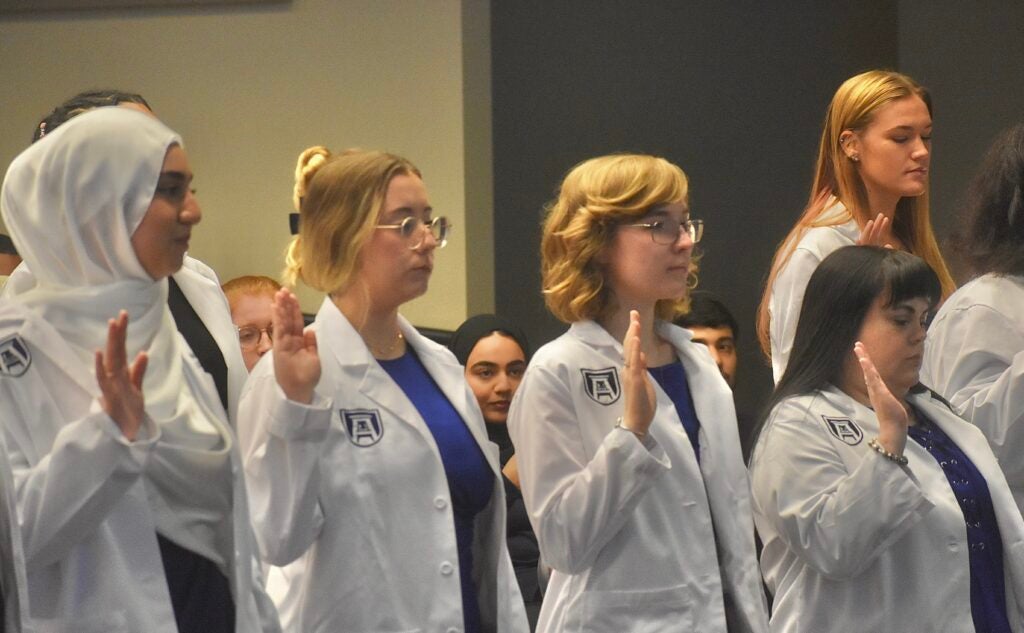
“I think it’s a step for the next generation to be bigger and stronger than where they were,” said Brown. “I appreciate the program and the connections they have with each other, and seeing how they’re going to move in the future.”

